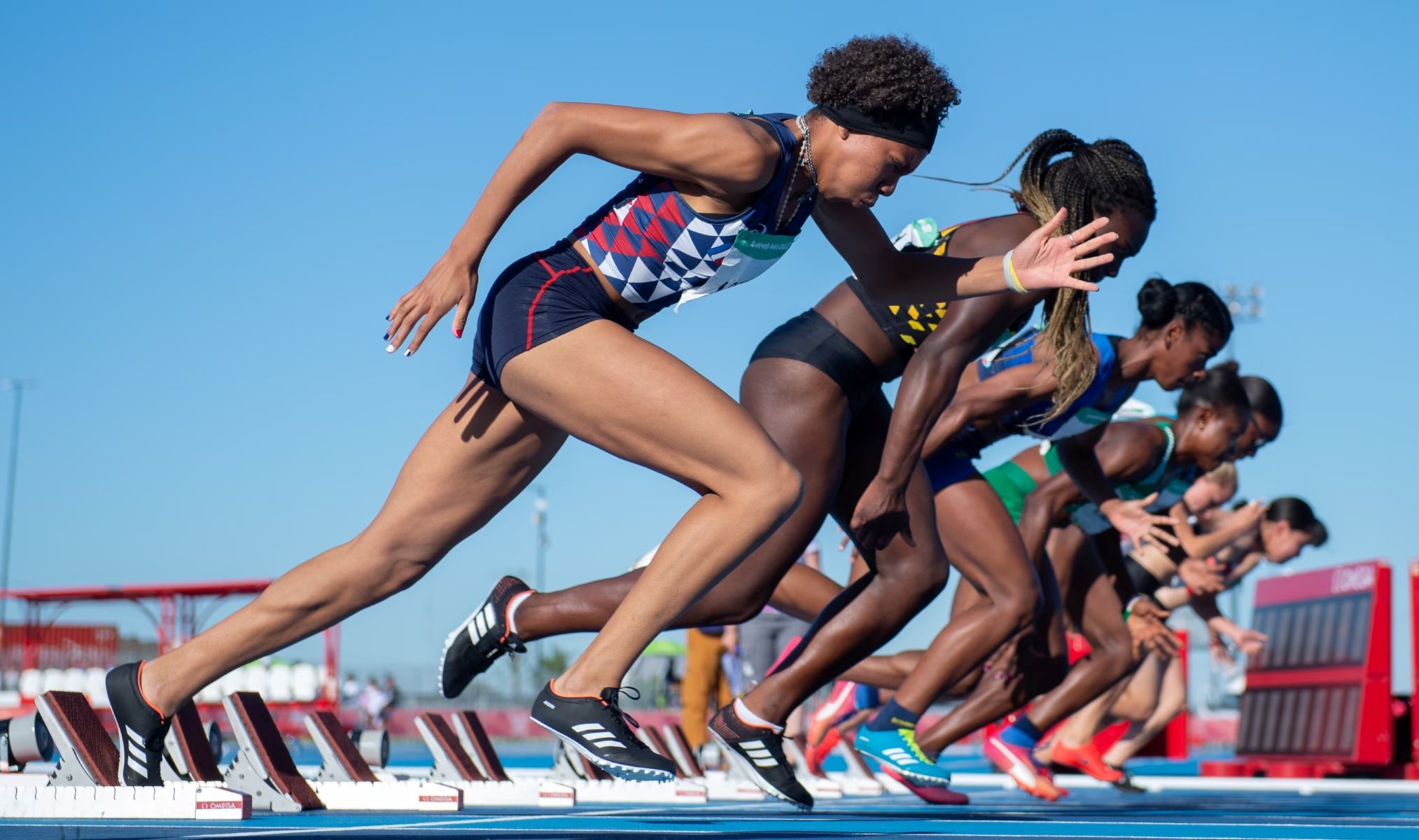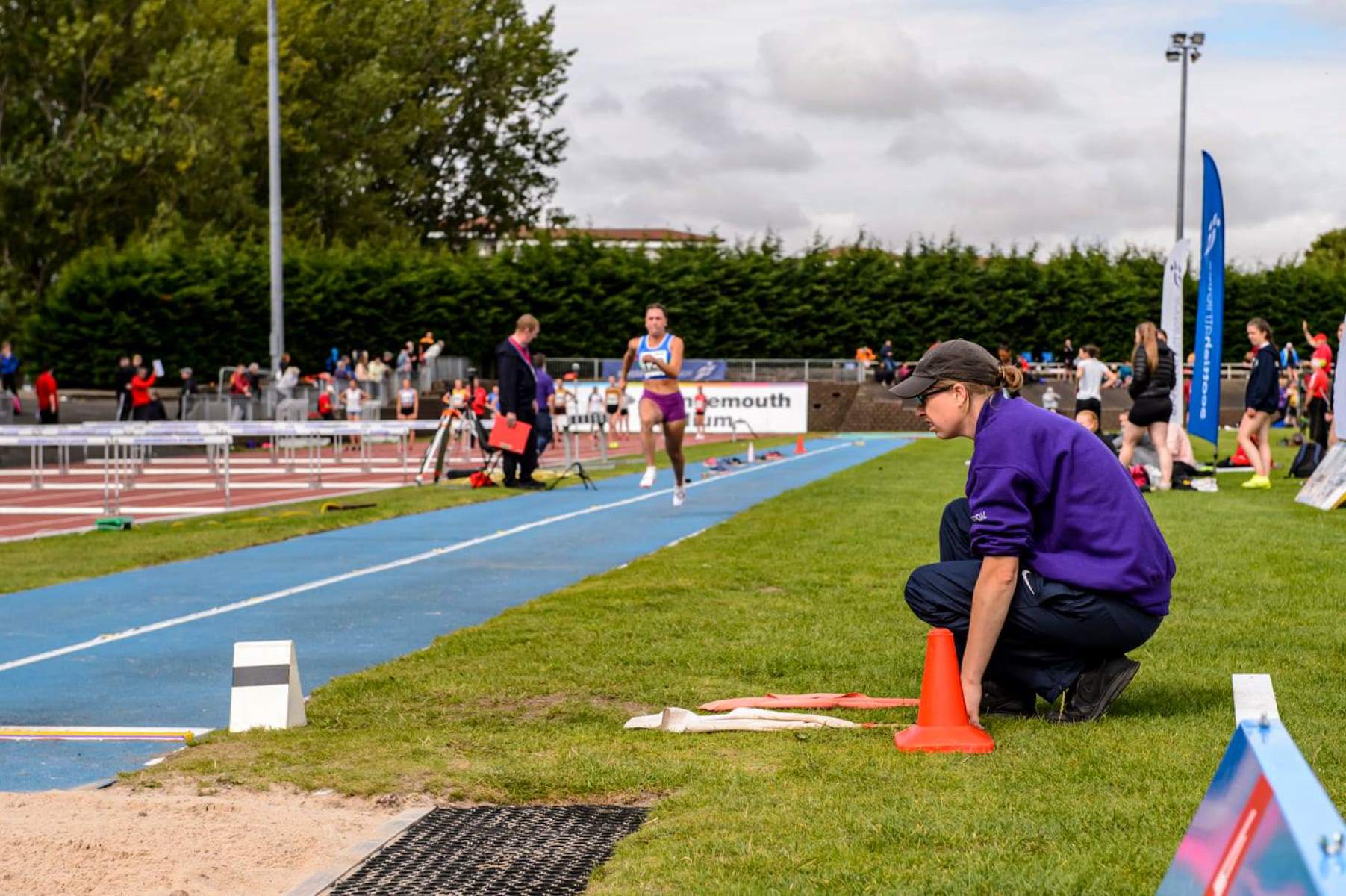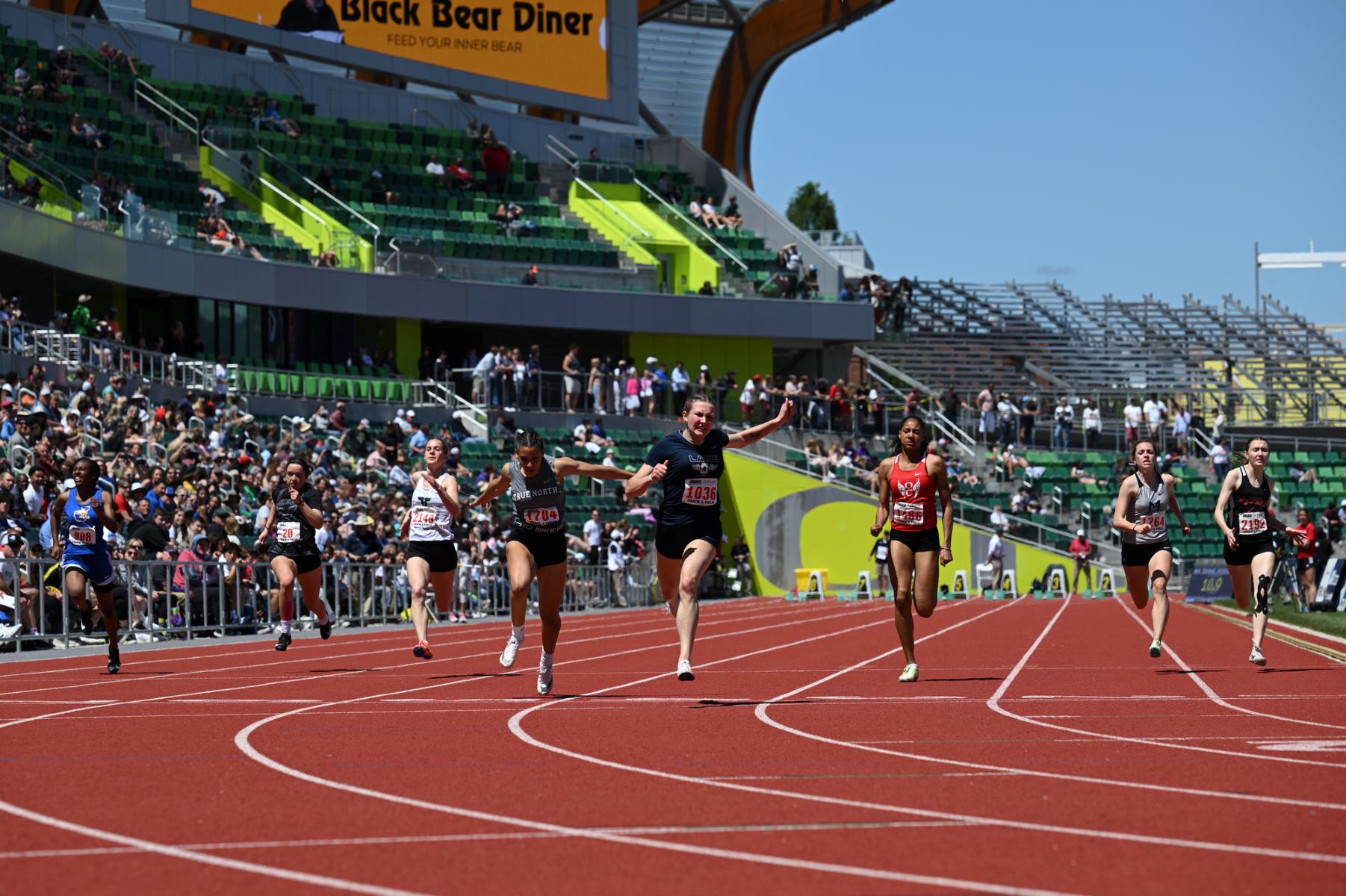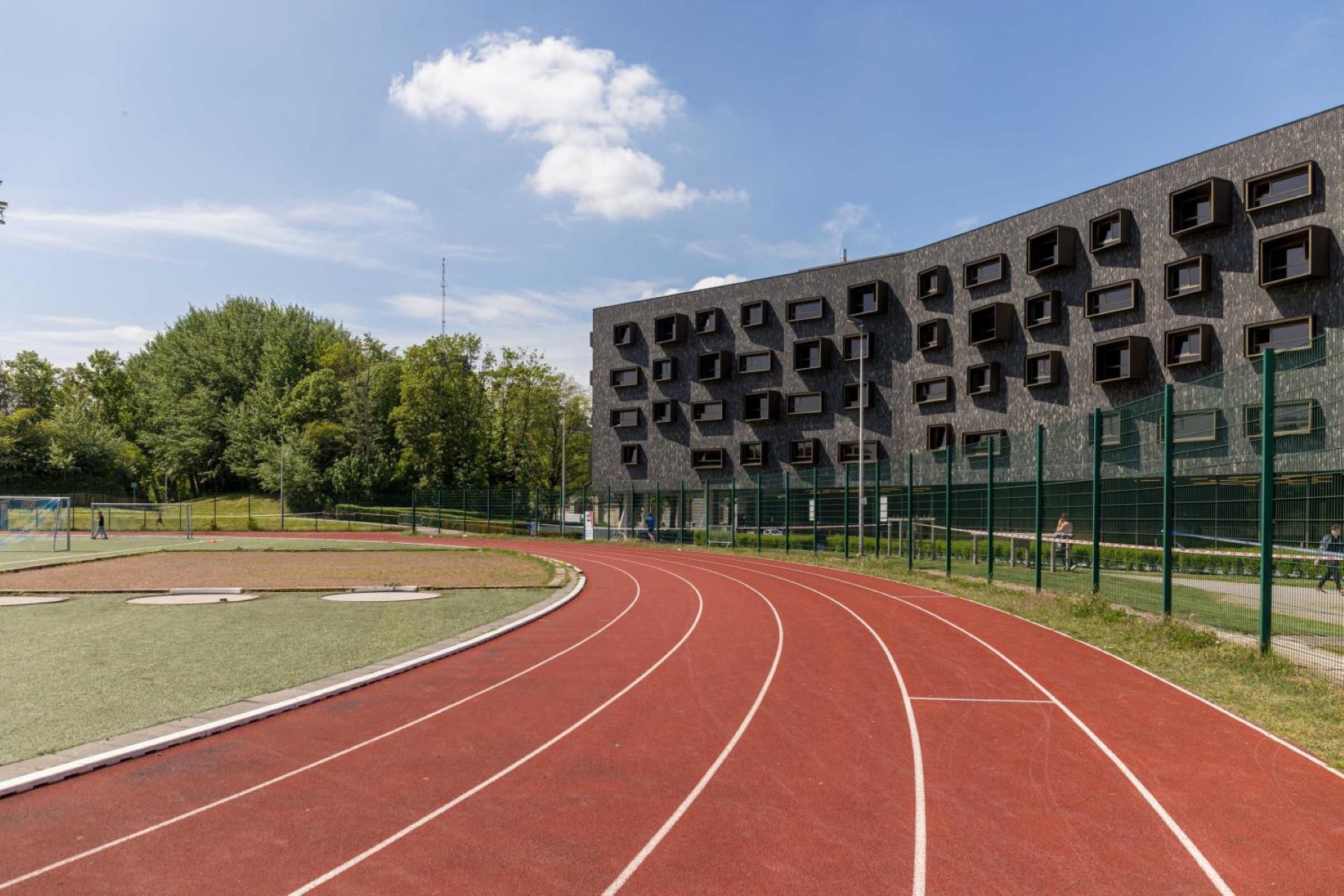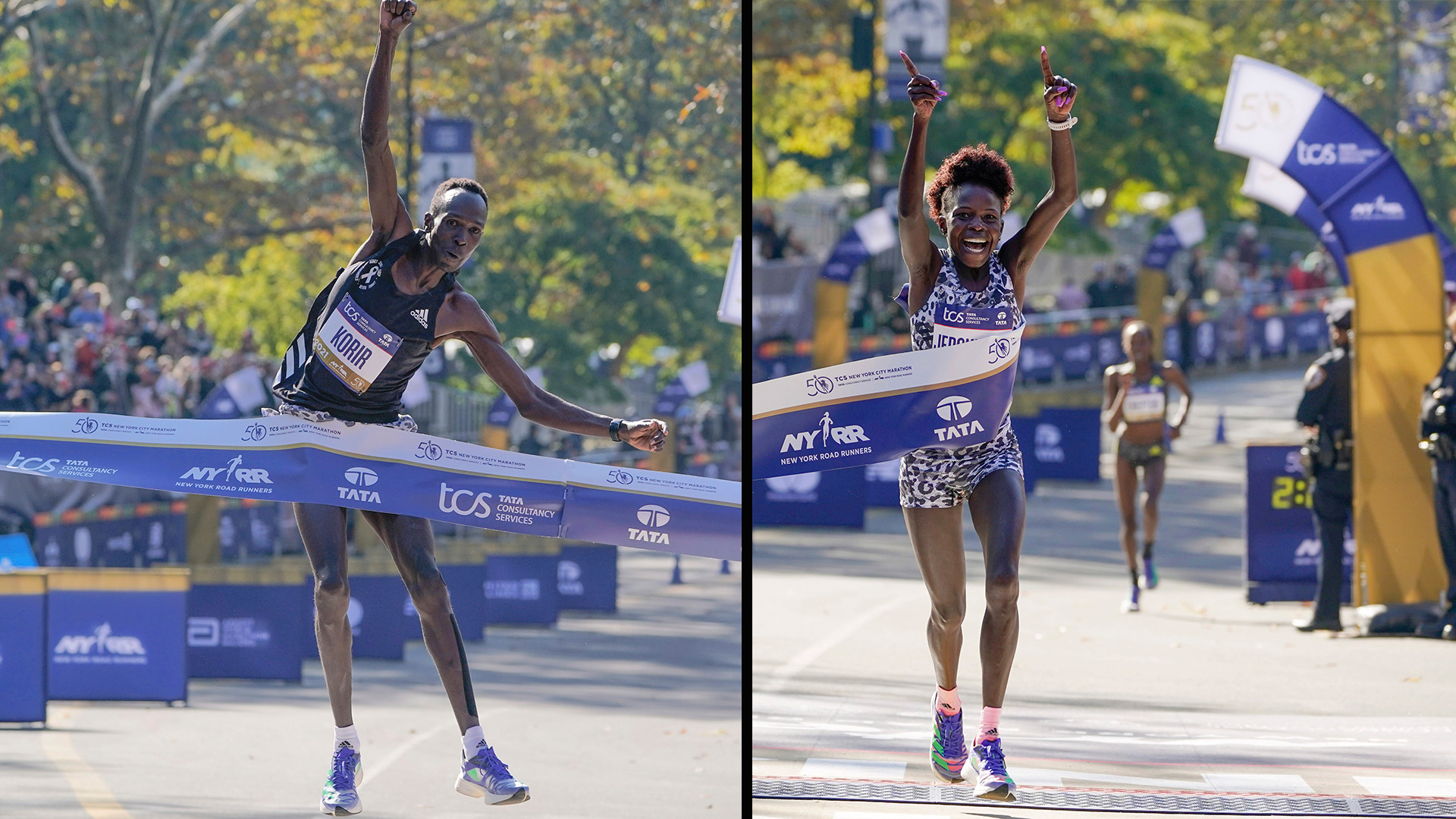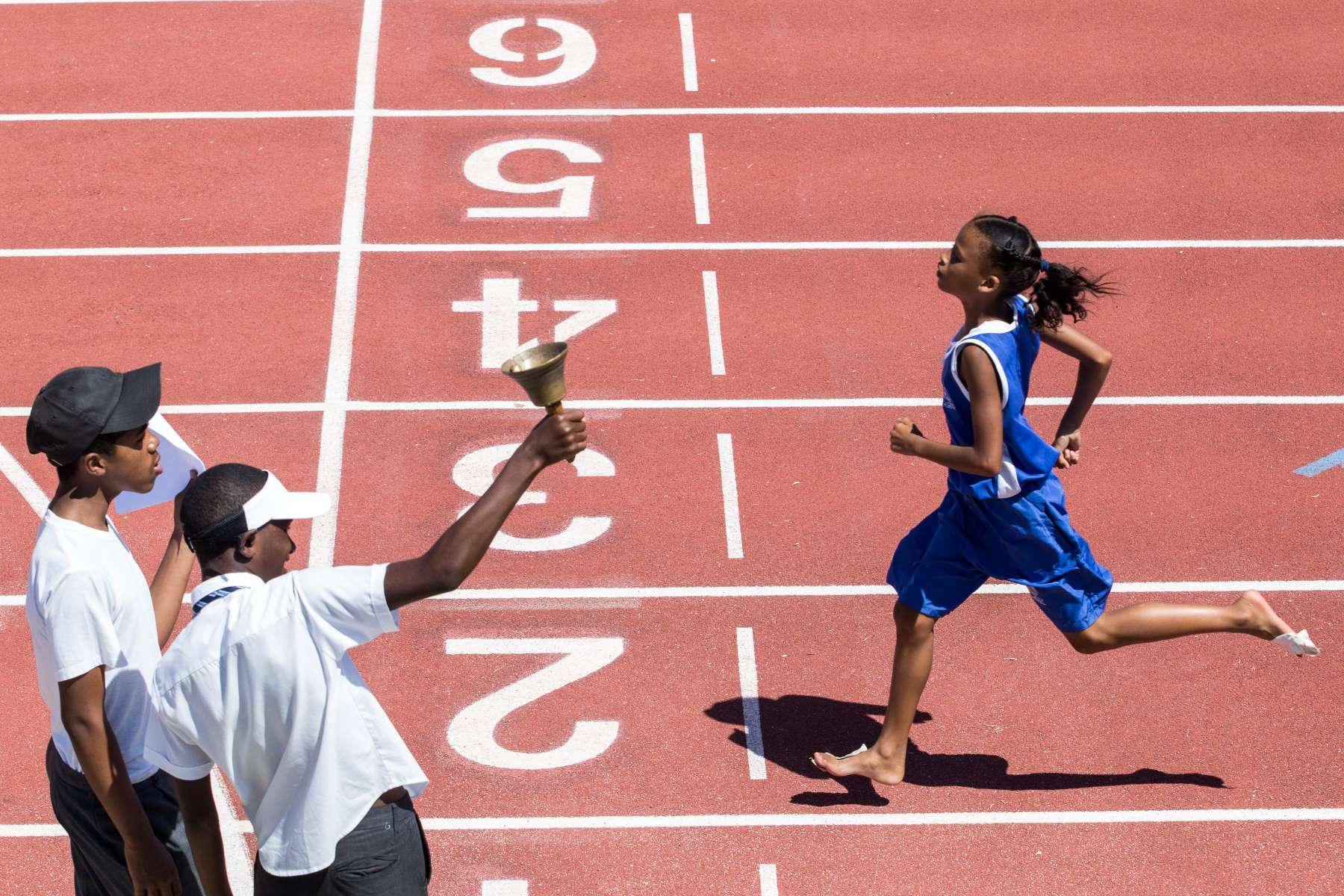

Featured
How Old Can You Start Track And Field?
Published: September 2, 2023
Discover when is the right age to start track and field and explore the featured program for young athletes interested in this sport.
Introduction
Track and field is a popular sport that encompasses various athletic disciplines, such as running, jumping, and throwing. It is not only a competitive sport but also a great avenue for children and young adults to develop physical fitness, discipline, and teamwork skills. As a parent or guardian, you may be wondering at what age your child can start participating in track and field activities.
The beauty of track and field is that it caters to a wide range of age groups, from young children all the way up to professional athletes. It offers a plethora of benefits, both physical and mental, that can aid in a child”s overall development. Let’s explore these benefits in more detail.
Benefits of Track and Field for Youth
Track and field is a sport that promotes an active lifestyle and encourages children to engage in regular physical activity. The diverse range of events allows athletes to discover and excel in their areas of strength. This can boost their confidence and self-esteem, leading to a positive mindset.
Participating in track and field can also help children develop important life skills such as discipline, time management, and perseverance. The rigorous training required for different events teaches athletes the value of hard work and dedication, setting them up for success in all areas of life.
Furthermore, track and field is a social sport that fosters teamwork and camaraderie. Athletes often train and compete as part of a team, learning to support and motivate each other. This sense of community creates lasting friendships and teaches children the importance of collaboration and sportsmanship.
Physical Development in Track and Field
Track and field offers a well-rounded approach to physical development. It helps improve cardiovascular fitness, muscular endurance, and overall strength. Running events build stamina and speed, while jumping and throwing events promote agility, coordination, and explosive power.
Moreover, participation in track and field can enhance bone density, promote proper posture, and improve flexibility. These physical benefits contribute to a healthier lifestyle and reduce the risk of various diseases associated with a sedentary lifestyle.
Benefits of Track and Field for Youth
Track and field is a sport that offers numerous benefits for children and young adults. Participating in track and field not only promotes physical fitness but also develops essential life skills. Here are some of the key benefits of track and field for youth:
- Physical Fitness: Track and field is a highly demanding sport that involves various athletic disciplines. Running events improve cardiovascular fitness and build stamina, while jumping and throwing events promote agility, coordination, and strength. Engaging in track and field activities regularly helps children develop a strong and healthy body.
- Discipline and Perseverance: Track and field requires a high level of discipline and commitment. Athletes must adhere to a strict training regimen, follow proper nutrition, and maintain a focused mindset. This sport teaches children the importance of hard work, dedication, and the value of perseverance in reaching their goals.
- Teamwork and Sportsmanship: While track and field is an individual sport, athletes often train and compete as part of a team. This fosters a sense of teamwork and camaraderie as athletes support and motivate each other. Children learn the importance of collaboration, cooperation, and sportsmanship, developing valuable social skills that extend beyond the track.
- Self-confidence and Personal Development: Participating in track and field can boost children’s self-confidence and self-esteem. As they excel in their chosen events and witness their personal growth and improvement, they develop a strong belief in their abilities. This confidence extends to other areas of life, helping them overcome challenges and face new opportunities with resilience.
- Goal-setting and Time Management: Track and field requires athletes to set specific goals and work towards achieving them. Whether it’s beating a personal record or qualifying for a championship, this sport teaches children the importance of setting goals and developing effective time management skills to balance training, academics, and other responsibilities.
- Mental Discipline: In addition to the physical demands, track and field also challenges athletes mentally. It requires focus, concentration, and the ability to perform under pressure. By engaging in this sport, children develop mental discipline, resilience, and the ability to cope with stress, which can be applied to various aspects of life.
These are just a few of the many benefits that track and field offers to young athletes. By participating in this sport, children can develop lifelong skills and habits that contribute to their overall well-being and success. Whether they choose to pursue track and field professionally or participate recreationally, the impact of this sport on their physical and personal development is undeniable.
Physical Development in Track and Field
Track and field is a sport that offers a wide range of athletic disciplines, each focusing on developing specific aspects of physical fitness. Engaging in track and field activities can have a significant impact on a child’s physical development. Here are some of the key areas of physical development that track and field promotes:
- Cardiovascular Fitness: Running is a fundamental aspect of track and field. Long-distance running events, such as the 800 meters or cross-country races, push athletes to improve their cardiovascular endurance. Through regular training and competition, children can strengthen their heart and lungs, leading to improved overall endurance and stamina.
- Muscular Strength and Power: Track and field incorporates various disciplines that require muscular strength and power. Sprinting events, such as the 100-meter dash, develop explosive power in the legs, while throwing events, like shot put or javelin throw, develop strength in the upper body. The combination of sprinting, jumping, and throwing activities helps children build overall muscular strength and power.
- Speed and Agility: Track and field events emphasize speed and agility. Sprinting events, hurdles, and relay races focus on improving an athlete’s acceleration, straight-line speed, and quick changes in direction. By participating in these events, children can enhance their speed and agility, which are essential for various sports and physical activities.
- Coordination and Balance: Track and field events require a high level of coordination and balance. Jumping events, such as long jump or high jump, demand precise coordination between the movements of the upper and lower body. Additionally, running events require athletes to maintain balance and coordination while moving at high speeds. Through regular practice and training, children can improve their coordination and balance, which can benefit them in other sports and daily activities.
- Flexibility and Range of Motion: In track and field, athletes perform dynamic movements that require flexibility and a wide range of motion. Activities like hurdling, where athletes must clear barriers while maintaining stride and flexibility, help improve overall flexibility and joint mobility. This increased flexibility can reduce the risk of injury and enhance overall athletic performance.
- Body Composition: Engaging in track and field activities, which generally involve intense training sessions and regular physical activity, can lead to improved body composition. Increased muscle mass, decreased body fat percentage, and improved muscle tone are common effects of regular participation in track and field. This can contribute to a healthier body and reduce the risk of chronic diseases.
Track and field offers a holistic approach to physical development, targeting various aspects of fitness. Whether it’s cardiovascular fitness, muscular strength, speed, agility, or coordination, participating in track and field can have a positive impact on a child’s overall physical well-being. It provides a platform to develop key physical attributes that can translate to success in other sports and physical activities, promoting lifelong health and wellness.
Track and Field Events for Young Athletes
Track and field offers a variety of events that cater to young athletes of different ages and abilities. These events are designed to develop specific skills and provide opportunities for young athletes to excel. Here are some track and field events suitable for young athletes:
- Sprinting: Sprinting events are short-distance races, typically ranging from 60 meters to 400 meters. These events focus on developing speed, acceleration, and proper running form. Young athletes can start with shorter sprints, gradually progressing to longer distances as they build endurance and confidence.
- Long Jump: The long jump is a jumping event where athletes aim to leap as far as possible from a take-off point. This event requires a combination of speed, power, and technique. Young athletes can practice basic jumping techniques and gradually work on improving their distance through proper training and technique refinement.
- High Jump: The high jump challenges athletes to clear a horizontal bar positioned at different heights. It requires a combination of explosive power, agility, and good jumping technique. Young athletes can start with lower heights and progress to higher ones as they develop their jumping ability and confidence.
- Shot Put: Shot put is a throwing event where athletes throw a heavy metal ball as far as possible. It develops upper body strength, core stability, and throwing technique. Young athletes can start with lighter implements and gradually increase the weight as they grow stronger and more skilled in the event.
- Hurdles: Hurdling events involve athletes running and jumping over a series of evenly spaced hurdles. It develops speed, agility, and coordination. Young athletes can begin with smaller hurdles and gradually progress to higher ones as they improve their technique and confidence.
- Relay Races: Relay races involve a team of athletes running a specified distance as a team, passing a baton from one runner to the next. They promote teamwork, cooperation, and speed. Young athletes can participate in relay races as part of a team, experiencing the camaraderie and excitement of team competition in track and field.
These are just a few examples of track and field events suitable for young athletes. It’s important to ensure that the events chosen are age-appropriate and align with the physical capabilities and interests of the child. Coaches and trainers play a crucial role in guiding young athletes and providing appropriate training programs to help them develop their skills and reach their potential in their chosen events.
Participating in a variety of track and field events allows young athletes to explore their strengths and interests and discover the events where they excel. This fosters a love for the sport and encourages continued participation and improvement. Whether it’s sprinting, jumping, throwing, or relay races, track and field offers a diverse range of events that can captivate and challenge young athletes, helping them develop both physically and mentally.
Safety Measures in Track and Field for Children
Ensuring the safety of young athletes is of utmost importance in any sport, including track and field. While track and field is generally considered a safe sport, proper safety measures should be implemented to prevent injuries and create a secure environment for children. Here are some important safety measures to consider in track and field for children:
- Proper Warm-up and Cool-down: Before and after participating in track and field activities, it is crucial for young athletes to engage in sufficient warm-up and cool-down routines. This helps prepare the body for physical activity and reduce the risk of muscle strains or other injuries. Warm-up exercises may include light jogging, dynamic stretches, and mobility work, while cool-down exercises may involve gentle stretches and foam rolling.
- Correct Technique and Form: Coaches and trainers should prioritize teaching young athletes the correct technique and form for each event. Proper technique not only enhances performance but also minimizes the risk of injuries. Athletes should be taught how to land safely in jumping events, how to throw with proper alignment and follow-through in throwing events, and how to maintain proper running mechanics in sprinting events.
- Gradual Progression: It’s important to ensure that young athletes progress gradually in terms of training intensity, duration, and event difficulty. Abruptly increasing training load or pushing children beyond their capabilities can lead to overuse injuries or physical burnout. Coaches and trainers should create training programs that are appropriate for the developmental stage and physical abilities of the child, gradually increasing the intensity and volume as the athlete progresses.
- Proper Equipment: Providing young athletes with appropriate and well-maintained equipment is essential for their safety. This includes well-fitted running shoes with proper cushioning and support, appropriate clothing that allows for freedom of movement, and any necessary safety gear such as spikes or throwing implements. Coaches should regularly inspect equipment to ensure it is in good condition and suitable for use.
- Hydration and Nutrition: Staying hydrated and consuming a balanced diet is crucial for young athletes’ performance and well-being. They should be encouraged to drink water before, during, and after training sessions or competitions to prevent dehydration. Additionally, providing proper nutrition with a focus on nutrient-rich foods such as fruits, vegetables, lean proteins, and complex carbohydrates supports optimal energy levels and helps prevent fatigue or nutrient deficiencies.
- Supervision and Emergency Preparedness: Track and field activities should always be supervised by qualified coaches, trainers, or other responsible adults. In the event of an injury or emergency, it’s important to have an emergency action plan in place, including clear communication strategies, access to first aid supplies, and knowledge of emergency procedures.
- Rest and Recovery: Adequate rest and recovery are crucial for young athletes to prevent overuse injuries and promote optimal performance. It’s important to include regular rest days in training schedules and allow for sufficient sleep to support proper growth and recovery. Coaches should educate young athletes on the importance of listening to their bodies and reporting any signs of pain or discomfort.
By implementing these safety measures, track and field can provide a safe and enjoyable experience for young athletes. Parents, coaches, and trainers should work together to prioritize the well-being of the child and create an environment that fosters both physical development and injury prevention.
Appropriate Age to Start Track and Field
Track and field is a versatile sport that caters to a wide range of age groups, from young children to adults. The appropriate age to start track and field can vary depending on factors such as the child’s physical development, interests, and readiness for structured training. While there is no definitive age to begin track and field, here are some general guidelines to consider:
- Early Childhood: In the early years, typically between the ages of 4 to 6, children can begin to explore basic track and field activities in a fun and non-competitive environment. Activities such as running, jumping, and throwing can be introduced through age-appropriate games and exercises that focus on fundamental movements and motor skills development.
- Elementary School Age: As children progress through elementary school, usually between the ages of 7 to 11, they can start participating in more structured track and field activities. This includes learning proper running form, basic jumping techniques, and introductory throwing skills. Emphasis should be placed on developing a love for the sport, building basic athletic skills, and fostering a positive attitude towards competition and teamwork.
- Middle School and High School: Middle school and high school-aged students, typically between the ages of 12 to 18, have the opportunity to participate in more specialized events and competitions. At this stage, athletes can focus on specific track and field disciplines that align with their strengths and interests. Coaches and trainers can provide more advanced training in areas such as sprinting, distance running, jumping, and throwing, while also emphasizing proper technique and injury prevention strategies.
- Adults: Track and field is not limited to youth participation. It is a sport that can be enjoyed by individuals of all ages, including adults. Whether it’s through competitive events or recreational leagues, adults can participate in track and field to stay active, maintain overall fitness, and enjoy the social aspects of the sport.
It’s important to note that every child is different, and their readiness to start track and field may vary. Some children may show an early interest and aptitude for the sport, while others may need more time and exposure to develop their skills and passion. It’s essential to assess the child’s physical capabilities, level of commitment, and desire to participate in track and field before deciding on the appropriate age to start.
Ultimately, the focus should be on creating a positive and supportive environment for young athletes to explore and enjoy track and field. Coaches, parents, and trainers play a crucial role in guiding children through their track and field journey, providing age-appropriate training, and nurturing their love for the sport.
Factors to Consider Before Starting Track and Field
Before enrolling a child in track and field, there are several important factors to consider to ensure a positive and rewarding experience. These factors can help determine if the child is ready for track and field and if it is the right fit for them. Here are some key factors to consider:
- Physical Readiness: Assess the child’s physical readiness for track and field. Consider their overall health, coordination, and any existing medical conditions or physical limitations that may affect their participation. It’s important to consult with a healthcare professional to ensure that the child can safely engage in track and field activities.
- Interest and Enthusiasm: Gauge the child’s level of interest and enthusiasm for track and field. It is essential that the child has a genuine desire to participate in the sport. Encourage open communication and allow the child to explore their interests and passions before committing to track and field.
- Time Commitment: Evaluate the time commitment required for track and field. Assess the child’s availability and willingness to commit to regular practices, training sessions, and competitions. Track and field can be demanding, and it’s crucial to ensure that the child can balance their academic and personal commitments alongside their participation in the sport.
- Support System: Consider the support system available for the child. Track and field requires the involvement of parents, guardians, and coaches who can provide guidance, transportation, and emotional support. Ensure that there is a support network in place to help the child navigate the challenges and demands of the sport.
- Coaching and Training: Assess the quality of coaching and training available. Look for experienced coaches who are knowledgeable about track and field techniques, injury prevention, and age-appropriate training methods. A supportive and knowledgeable coaching staff can greatly enhance the child’s experience and development in the sport.
- Competition and Performance: Consider the child’s attitude towards competition and performance. Some children thrive in competitive environments, while others may prefer a more recreational approach. Reflect on the child’s goals and aspirations in track and field, and ensure that their expectations align with their age, skill level, and overall enjoyment of the sport.
- Balanced Approach: Strive for a balanced approach to track and field. It is important to encourage the child to pursue other interests and engage in a variety of physical activities to prevent burnout and promote overall development. Encourage balance and autonomy in the child’s athletic pursuits.
Evaluating these factors before starting track and field can help ensure a positive and beneficial experience for the child. It is important to remember that every child is unique, and their readiness and suitability for track and field may vary. By considering these factors and making informed decisions, parents and guardians can support their children in finding joy, growth, and success in the world of track and field.
Conclusion
Track and field is a versatile and rewarding sport that offers numerous benefits for children and young athletes. From developing physical fitness and athletic skills to fostering discipline, teamwork, and personal growth, track and field provides a holistic approach to a child’s overall development. The appropriate age to start track and field may vary based on individual readiness and interests, but introducing children to the sport at an early age can help cultivate a lifelong love for athletics and healthy living.
When considering track and field for children, it is crucial to prioritize their safety by implementing proper warm-up and cool-down routines, teaching correct technique and form, and providing the necessary equipment and supervision. Additionally, factors such as the child’s physical readiness, interest, time commitment, and support system should be assessed to ensure a positive and successful journey in track and field.
Ultimately, track and field offers young athletes opportunities for growth, both physically and mentally. It helps develop important characteristics such as discipline, perseverance, teamwork, and goal-setting. By participating in a variety of track and field events, children can discover their strengths and interests, fostering a sense of self-confidence and achievement.
Whether it’s sprinting, jumping, throwing, or relay races, track and field provides a platform for children to showcase their athletic abilities while also promoting a healthy and active lifestyle. By creating a supportive and nurturing environment, parents, coaches, and trainers can help young athletes thrive and enjoy the numerous benefits that track and field has to offer.
So, if your child shows an interest in track and field, consider exploring the possibilities and encourage their involvement in this dynamic and enriching sport. With the right guidance and support, they can embark on an exciting journey of growth, sportsmanship, and personal achievement in the world of track and field.
